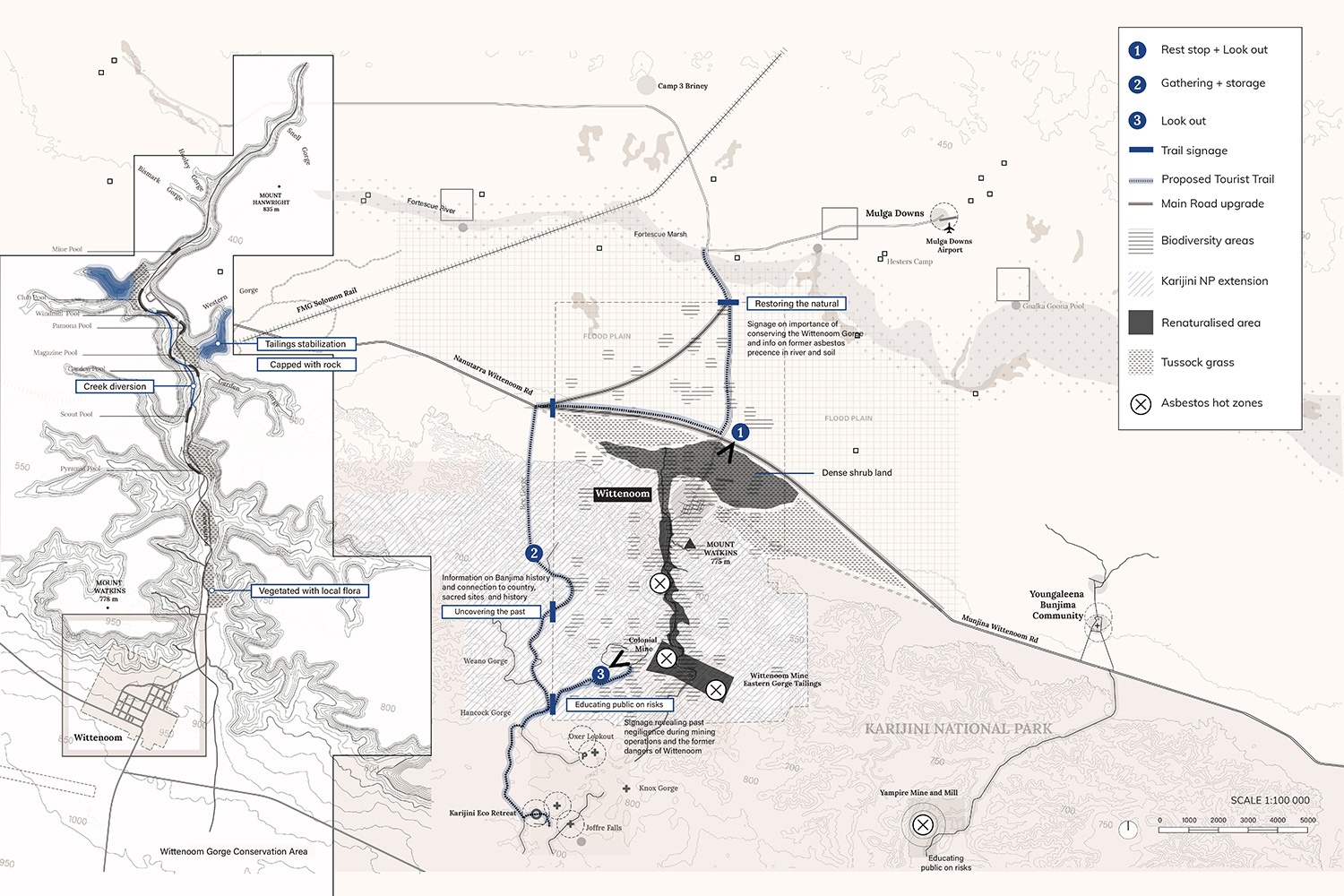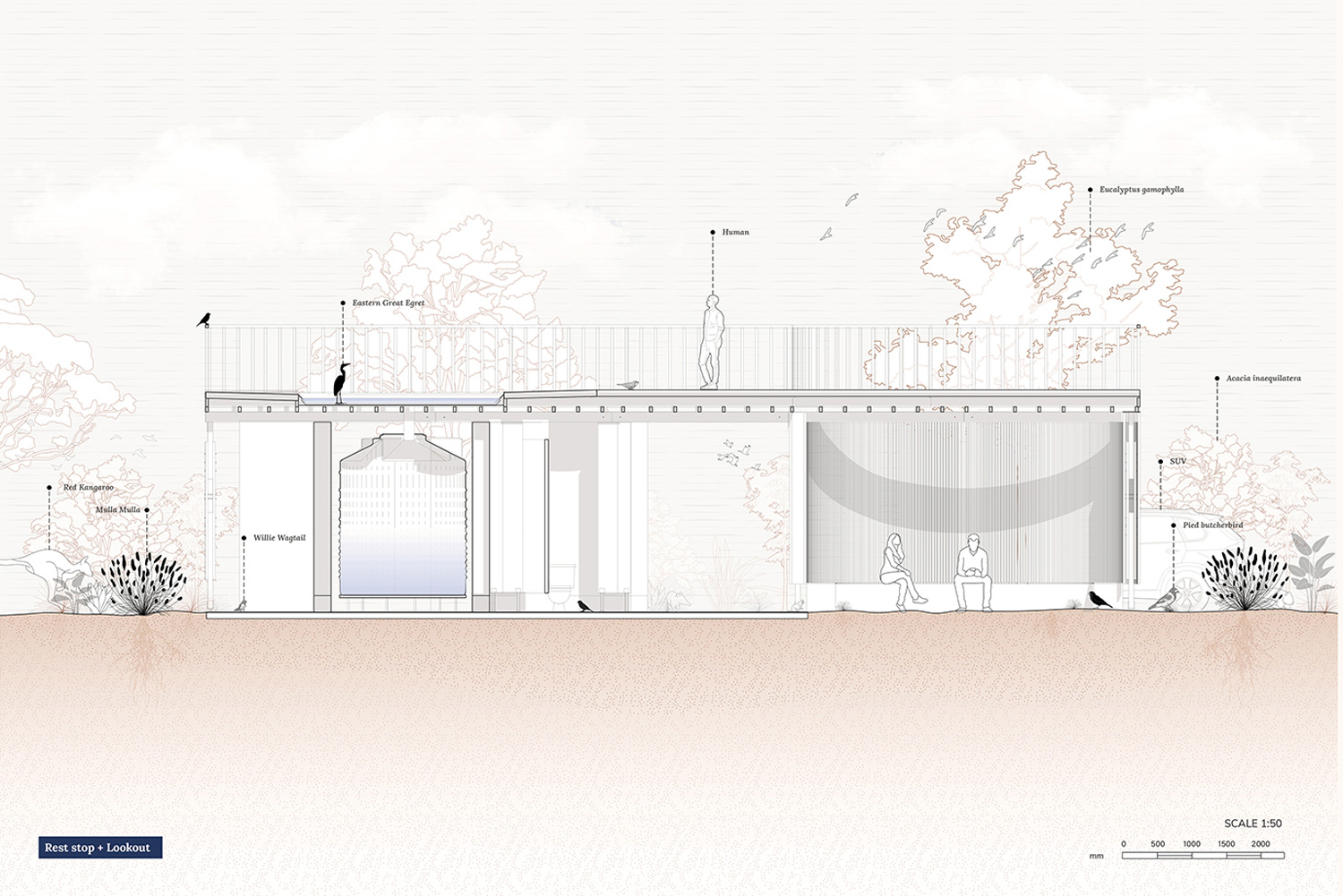Samantha Romana
Monash University
Australia
From the entrant’s submission:
Asbestos has become a carcinogen entangled within the construction industry, in the home, in governance, economies, and in memory, at the hand of human progression. This project, titled ‘On the Edge of Ruin’, questions: how might architecture help to redeem the destructiveness of asbestos production to generate a restorative future in the act of forgetting, and making space for other species to flourish? In the undoing of a material lingering in the past and present, the project presents a chance for future repair to exist by encouraging an ecological equilibrium and return back to natural ecosystems over time through architectural intervention on the edge of the brownfield site of Wittenoom in Western Australia.
The project interrogated multiple issues stemming from the central problem of environmental deterioration, and humanity’s need to consume at the fate of other species. The project attempts to demonstrate how architecture can help to safeguard a multispecies existence in the future and widens the capacity for architects to help cultivate conditions of on-going-ness as a human obligation. The rationale for this project’s name ‘On the Edge of Ruin’ is twofold, referencing the broader and refined scales the project is positioned within. Firstly, it is suggestive of the planet’s future at the hand of human civilisation. It also references the proposition of interim human occupation on the edge of a once heavily contaminated site. It questions: how might humanity behave as custodians of restorative-ness, rather than perpetrators of destruction? As we teeter between the destroyed and repair, how could systems of resurgence be considered as a necessity for all planetary beings? How can this process of making and un-making of place be made more efficient?




